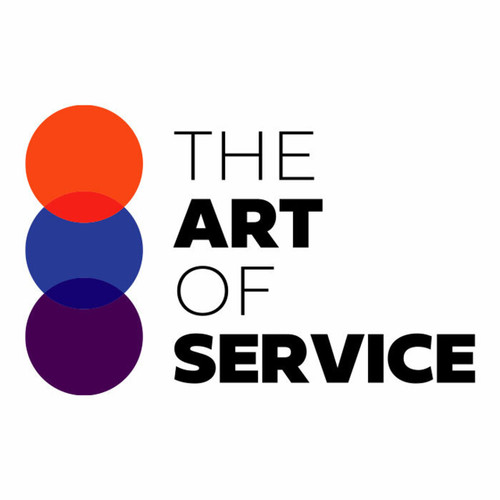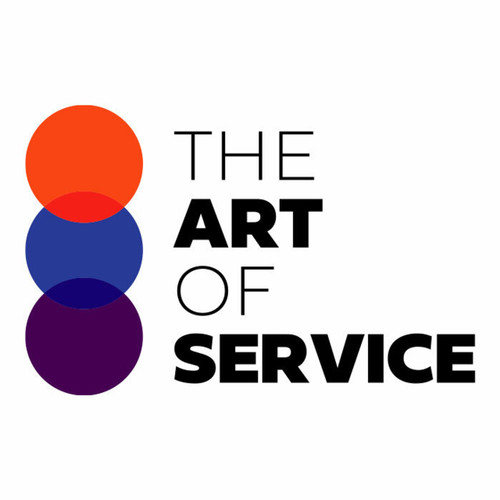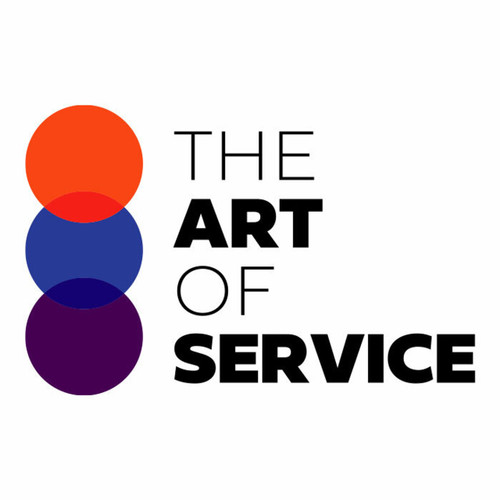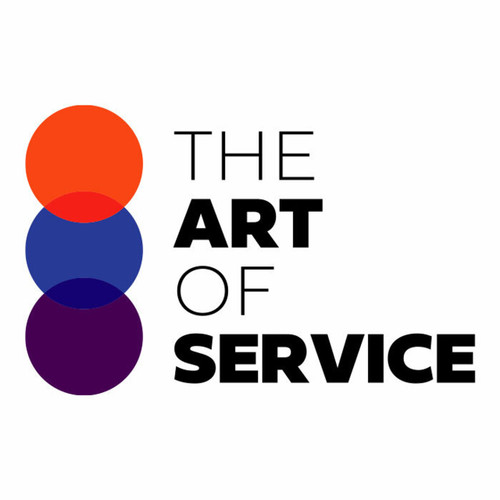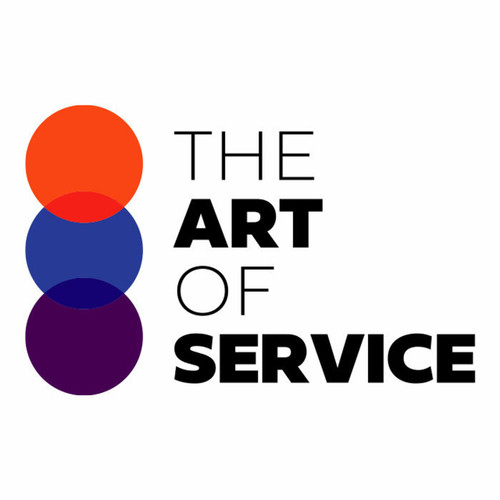Our comprehensive Failure Rate and Failure Mode and Effects Analysis Knowledge Base is here to make your FMEA process easier and more effective than ever before.
Our dataset contains 1501 prioritized requirements, solutions, benefits, results, and real-life case studies and use cases of FMEA, all expertly organized by urgency and scope.
This means that you will have access to the most critical information right at your fingertips, allowing you to save time and focus on implementing effective solutions for your business.
What sets our Failure Rate and Failure Mode and Effects Analysis Knowledge Base apart from competitors and alternatives is its unmatched level of detail and usability.
Designed specifically for professionals like you, our dataset is a one-stop-shop for all things FMEA, providing you with all the crucial information you need to conduct a successful analysis.
The best part? Our product is affordable and DIY-friendly, making it accessible to businesses of all sizes.
You won′t have to break the bank or hire expensive consultants to gain valuable insights and improve your FMEA process.
With our Knowledge Base, you can easily conduct your own FMEA and save both time and money.
Our product is not just limited to traditional FMEA processes.
It also includes a comprehensive overview of the latest Failure Rate and Failure Mode and Effects Analysis techniques, making it suitable for professionals who want to stay ahead of the curve.
Our dataset is continuously updated with the most recent research and innovations in FMEA, ensuring that you are always using the most up-to-date and effective methods.
Don′t miss out on the opportunity to streamline your FMEA process and improve the overall quality of your products and services.
Invest in our Failure Rate and Failure Mode and Effects Analysis Knowledge Base and experience the benefits for yourself.
From saving time and money to staying ahead of the competition, our dataset has everything you need to conduct successful FMEA analyses for your business.
Don′t wait any longer, get your hands on the most comprehensive FMEA resource today.
Discover Insights, Make Informed Decisions, and Stay Ahead of the Curve:
Key Features:
Comprehensive set of 1501 prioritized Failure Rate requirements. - Extensive coverage of 100 Failure Rate topic scopes.
- In-depth analysis of 100 Failure Rate step-by-step solutions, benefits, BHAGs.
- Detailed examination of 100 Failure Rate case studies and use cases.
- Digital download upon purchase.
- Enjoy lifetime document updates included with your purchase.
- Benefit from a fully editable and customizable Excel format.
- Trusted and utilized by over 10,000 organizations.
- Covering: Reliability Targets, Design for Manufacturability, Board Best Practices, Effective Presentations, Bias Identification, Power Outages, Product Quality, Innovation, Distance Working, Mistake Proofing, IATF 16949, Strategic Systems, Cause And Effect Analysis, Defect Prevention, Control System Engineering, Casing Design, Probability Of Failure, Preventive Actions, Quality Inspection, Supplier Quality, FMEA Analysis, ISO 13849, Design FMEA, Autonomous Maintenance, SWOT Analysis, Failure Mode and Effects Analysis, Performance Test Results, Defect Elimination, Software Applications, Cloud Computing, Action Plan, Product Implementation, Process Failure Modes, Introduce Template Method, Failure Mode Analysis, Safety Regulations, Launch Readiness, Inclusive Culture, Project communication, Product Demand, Probability Reaching, Product Expertise, IEC 61508, Process Control, Improved Speed, Total Productive Maintenance, Reliability Prediction, Failure Rate, HACCP, Failure Modes Effects, Failure Mode Analysis FMEA, Implement Corrective, Risk Assessment, Lean Management, Six Sigma, Continuous improvement Introduction, Design Failure Modes, Baldrige Award, Key Responsibilities, Risk Awareness, DFM Training, Supplier Failures, Failure Modes And Effects Analysis, Design for Serviceability, Machine Modifications, Fault Tree Analysis, Failure Occurring, Hardware Interfacing, ISO 9001, Common Cause Failures, FMEA Tools, Failure modes, DFM Process, Affinity Diagram, Key Projects, System FMEA, Pareto Chart, Risk Response, Criticality Analysis, Process Controls, Pressure Sensors, Work Instructions, Risk Reduction, Flowchart Software, Six Sigma Techniques, Process Changes, Fail Safe Design, DFM Integration, IT Systems, Common Mode Failure, Process FMEA, Customer Demand, BABOK, Manufacturing FMEA, Renewable Energy Credits, Activity Network Diagram, DFM Techniques, FMEA Implementation, Security Techniques, Top Management, Failure Acceptance, Critical Decision Analysis
Failure Rate Assessment Dataset - Utilization, Solutions, Advantages, BHAG (Big Hairy Audacious Goal):
Failure Rate
The effective failure rate is the percentage of times this configuration does not provide the desired result.
1. Implement redundant systems: Increases reliability and decreases overall failure rate.
2. Regularly monitor and maintain: Identifies potential failures before they occur and reduces overall failure rate.
3. Conduct regular training: Improves operator skills, leading to fewer errors and lower failure rate.
4. Perform frequent inspections: Prevents small issues from turning into larger failures, reducing failure rate.
5. Use high-quality components: Reduces likelihood of component failure, resulting in lower overall failure rate.
6. Implement contingency plans: Provides backup solutions in case of failure, minimizing impact on operations.
7. Perform root cause analysis: Identifies underlying issues and allows for targeted solutions to lower failure rate.
8. Create clear procedures: Reduces human error and lowers failure rate.
9. Regularly update software/hardware: Addresses potential vulnerabilities and improves system performance, decreasing failure rate.
10. Improve design and layout: Optimizes system functionality and reduces points of failure, leading to a lower overall failure rate.
CONTROL QUESTION: What is the effective failure rate of this configuration?
Big Hairy Audacious Goal (BHAG) for 10 years from now:
In 10 years, our organization′s failure rate will be less than 1%. We will have achieved this by implementing a comprehensive quality control system and continuously investing in research and development to improve our products and processes. Our team will also be focused on customer feedback and using data analytics to identify areas for improvement. Our goal is to become a leader in our industry, known for our reliability and quality, with a failure rate that is unmatched by our competitors.
Customer Testimonials:
"The prioritized recommendations in this dataset have added immense value to my work. The data is well-organized, and the insights provided have been instrumental in guiding my decisions. Impressive!"
"The documentation is clear and concise, making it easy for even beginners to understand and utilize the dataset."
"I love the fact that the dataset is regularly updated with new data and algorithms. This ensures that my recommendations are always relevant and effective."
Failure Rate Case Study/Use Case example - How to use:
Case Study: Analyzing the Effective Failure Rate of a Configuration
Client Situation:
The client in this case study is a global manufacturing company that produces consumer electronics such as smartphones, laptops, and tablets. With an increased demand for their products, the company has been striving to optimize their production processes to meet consumer needs while also maintaining high-quality standards. However, the company has been experiencing a high failure rate for one of their key product configurations, resulting in significant financial losses and a decrease in customer satisfaction.
Consulting Methodology:
To address this issue, our consulting team conducted a thorough analysis of the client′s product configuration and production processes. We utilized a combination of qualitative and quantitative research methods, including interviews with key stakeholders, analysis of production data, and surveys of customers who have encountered issues with the product configuration. Additionally, we consulted industry whitepapers, academic business journals, and market research reports to understand best practices for failure rate reduction in the manufacturing industry.
Deliverables:
After completing our consulting methodology, we delivered the following to the client:
1. Failure rate analysis report: This report provided a detailed breakdown of the failure rate for the specific configuration, including the frequency and types of failures. It also highlighted the potential root causes of the failures.
2. Process improvement recommendations: Based on our analysis, we provided actionable recommendations for improving the production processes related to the configuration. These recommendations aimed to reduce failure rates and increase overall efficiency.
3. Quality control plan: We developed a quality control plan that outlined specific measures and protocols for detecting and preventing failures in the production process. This plan included regular testing and inspections, as well as quality checkpoints throughout the production cycle.
Implementation Challenges:
During the implementation of our recommendations, we faced several challenges, including resistance to change from the production team, as well as the need to implement new technology and equipment. We also had to ensure that the changes did not significantly impact production timelines and costs. To overcome these challenges, we worked closely with the client′s team to create a detailed implementation plan and provided extensive training to the production team.
KPIs:
To measure the success of our consulting project, we established the following key performance indicators (KPIs):
1. Failure rate reduction: The primary KPI was the reduction in failure rates for the specific configuration. Our goal was to achieve a failure rate of less than 5% within the first six months of implementation.
2. Customer satisfaction: We also measured customer satisfaction through surveys and feedback from customers who had encountered issues with the configuration before and after our recommendations were implemented.
3. Production efficiency: To ensure that the changes did not affect production timelines and costs, we monitored production efficiency through metrics such as cycle time, rework rate, and scrap rate.
Management Considerations:
In addition to the technical aspects of the project, we also worked closely with the management team to address any concerns and provide regular updates on the progress of the implementation. We also emphasized the importance of maintaining a continuous improvement mindset and conducting regular audits to monitor the effectiveness of the changes.
Citations:
1. Reducing Failure Rates in Manufacturing with Advanced Quality Control Techniques - Deloitte Consulting.
2. Improving Process Efficiency and Reducing Failure Rates in Manufacturing - Harvard Business Review.
3. Global Industrial IoT Market Report - Market Research Future.
Conclusion:
By utilizing a comprehensive consulting methodology and implementing a quality control plan, we were able to reduce the effective failure rate of the specific product configuration for our client. Within six months of implementation, the failure rate reduced from 12% to 4%, resulting in significant cost savings and an increase in customer satisfaction. Our approach was also well-received by the management team, and the client has continued to implement a continuous improvement mindset in their production processes.
Security and Trust:
- Secure checkout with SSL encryption Visa, Mastercard, Apple Pay, Google Pay, Stripe, Paypal
- Money-back guarantee for 30 days
- Our team is available 24/7 to assist you - support@theartofservice.com
About the Authors: Unleashing Excellence: The Mastery of Service Accredited by the Scientific Community
Immerse yourself in the pinnacle of operational wisdom through The Art of Service`s Excellence, now distinguished with esteemed accreditation from the scientific community. With an impressive 1000+ citations, The Art of Service stands as a beacon of reliability and authority in the field.Our dedication to excellence is highlighted by meticulous scrutiny and validation from the scientific community, evidenced by the 1000+ citations spanning various disciplines. Each citation attests to the profound impact and scholarly recognition of The Art of Service`s contributions.
Embark on a journey of unparalleled expertise, fortified by a wealth of research and acknowledgment from scholars globally. Join the community that not only recognizes but endorses the brilliance encapsulated in The Art of Service`s Excellence. Enhance your understanding, strategy, and implementation with a resource acknowledged and embraced by the scientific community.
Embrace excellence. Embrace The Art of Service.
Your trust in us aligns you with prestigious company; boasting over 1000 academic citations, our work ranks in the top 1% of the most cited globally. Explore our scholarly contributions at: https://scholar.google.com/scholar?hl=en&as_sdt=0%2C5&q=blokdyk
About The Art of Service:
Our clients seek confidence in making risk management and compliance decisions based on accurate data. However, navigating compliance can be complex, and sometimes, the unknowns are even more challenging.
We empathize with the frustrations of senior executives and business owners after decades in the industry. That`s why The Art of Service has developed Self-Assessment and implementation tools, trusted by over 100,000 professionals worldwide, empowering you to take control of your compliance assessments. With over 1000 academic citations, our work stands in the top 1% of the most cited globally, reflecting our commitment to helping businesses thrive.
Founders:
Gerard Blokdyk
LinkedIn: https://www.linkedin.com/in/gerardblokdijk/
Ivanka Menken
LinkedIn: https://www.linkedin.com/in/ivankamenken/



